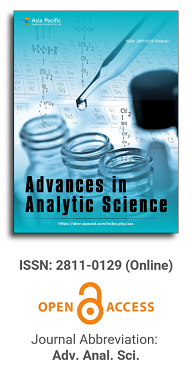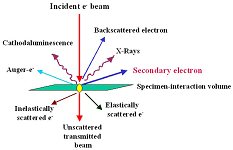
Asia Pacific Academy of Science Pte. Ltd. (APACSCI) specializes in international journal publishing. APACSCI adopts the open access publishing model and provides an important communication bridge for academic groups whose interest fields include engineering, technology, medicine, computer, mathematics, agriculture and forestry, and environment.

Quality and safety indicators of multigrain bread with freshly prepared rye malt using phytoantioxydants
Vol 6, Issue 1, 2025
Download PDF
Abstract
The quality and safety indicators of a new type of multigrain bread using freshly obtained rye malt were studied. Hydrogen peroxide as a safe prooxidation activator and aqueous phytoextracts as natural antioxidants were used for the bioactivation of grain. The choice of phytoextract was made by comparing the antioxidant properties of thyme and oregano obtained with warm (60 ℃) or hot (80 ℃) extraction. The rate of accumulation of organic acids and reducing substances was maximum during malting under the influence of thyme extract (80 ℃). Oregano extracts were used to make rye-textured flour. The paper describes a new method for producing emulsified malt, known as “rye cream”. Unlike other methods, it is proposed to use not dried malt, but freshly obtained rye malt extract. This made it possible to form the adaptogenic properties of the food system, which was evident from the results of the antioxidant activity assessment. This assessment was carried out at different stages of the bread production process. It was shown that at the stage of rye cream production, the oxidation-reduction balance of the food system was shifted towards prooxidants, so the use of phytoextracts with antioxidant properties was necessary. At the dough production stage, the balance changed in the opposite direction, and antioxidants began to dominate the food system as functional nutritional components. Multigrain bread had antioxidant activity twice as high as the standard (Borodinsky bread) and had better characteristics compared to two analogues. Under the influence of multigrain bread, the production of free radicals was inhibited more gently than under the influence of rye bread “BIO”. Another analogue, Fitness bread, had the properties of a strong prooxidant, not an antioxidant. According to the results of an objective assessment in independent laboratories, multigrain bread with rye cream met regulatory requirements for quality and safety, which was confirmed by the results of physicochemical and microbiological analysis.
Keywords
References
- Rogov IA, Oreshkin EN, Sergeev VN. Medical and technological aspects of the development and production of functional foods. Food industry. 2017; 1: 13–15.
- Kiryukhina AN, Grigorieva RZ, Kozhevnikova AYu. Current state and prospects for the development of bread and bakery products production in Russia. Food production equipment and technology. 2019; 2: 330–337.
- Zainobiddinov MZT. Analysis of the chemical composition of wheat and rye grains for daily consumption. Economy and society. 2023; 12 (115)-1: 1108–1116.
- Development of the gluten-free bakery products market. Portal Sphere: Confectionery and Bakery Industry. Available online: https://sfera.fm/articles/hlebopecheniya/razvitie-rynka-bezglyutenovykhkhlebopekarnykh-produktov_1752 (accessed on 2 June 2024).
- Moscow: Standartinform. Bakery products. Terms and definitions. Moscow: Standartinform; 2015.
- Naumenko NV, Potoroko IY, Kretova YuI, et al. On the issue of intensification of the grain germination process. Far Eastern Agrarian Bulletin. 2018; 4(48): 109–115.
- Novikova IM, Blinnikova OM, Blokhina TS. Marketing research of bakery products in the consumer market of the city of Michurinsk. Science and education. 2022, 3. Available online: https://cyberleninka.ru/article/n/marketingovye-issledovanie-hlebobulochnyh-izdeliy-na-potrebitelskom-rynke-goroda-michurinsk (accessed on 27 December 2024).
- Muravyov KYu, Barakova NV, Khomyakov YuV, Panova GG. Obtaining rye malt enriched with selenium. Scientific journal of NRU ITMO. Series “Processes and equipment of food production”. 2018; 1: 15–20.
- Naumenko NV. Potential for using biotechnology in food production. Actual biotechnology. 2013; 2(5):14–17.
- Baranova TV, Kalaev VN, Voronin AA. Environmentally friendly growth stimulants for pre-sowing seed treatment. Bulletin of the Immanuel Kant Baltic Federal University. Series: Natural and Medical Sciences. 2014; 7: 96–102.
- Martusevich AK, Karuzin KA, Kovaleva LK, et al. Metabolic characteristics of the action of active oxygen species on a model biosystem. Bioradicals and antioxidants. 2021; 2: 36–38.
- Lesovskaya MI, Kabak NL. The influence of antioxidants and prooxidants on the dynamics of rye grain germination. In: Proceedings of the International scientific and practical conference dedicated to the 70th anniversary of the Federal State Budgetary Educational Institution of Higher Education “Krasnoyarsk State Agrarian University”; 19-21 April 2022; Krasnoyarsk, Russia.
- Saulova TA, Bas VI, Kravchenko OS. Dynamics of plant phytoncidal activity in ionized air of the phytomodule. Reshetnev readings; 2018.
- Vorobyov DA, Zabudskiy AI, Algazin DN. Development of a grain bioactivation unit for use in feeding farm animals. Bulletin of Omsk State Agrarian University. 2017, 4(28): 200–204.
- Lesovskaya MI, Babaeva KA. Bioactivation of rye grain under the influence of aqueous extracts of creeping thyme and common oregano. In: Proceedings of the National scientific conference; 11 December 2020; Krasnoyarsk, Russia.
- Moscow, Standartinform. Organic products from wild-growing raw materials. Moscow, Standartinform; 2021.
- Lesovskaya MI. The effect of phytoextracts on the kinetics of free radical production in human blood in vitro. Fundamental research. 2015; 2-6: 1211–1215.
- Starikova DV. Influence of stimulators, biological preparations and microfertilizers on yield and quality of grain of winter soft wheat. Scientific Journal of KubSAU. 2014; 98: 769–782.
- Chursinov YuA, Kovaleva ES, Koshulko VS. et al. Bioactivation of grain using fruit acids (Russian). Bulletin of the Russian Agricultural Science. 2020; 2. doi: 10.30850/vrsn/2020/2/26-28
- Lesovskaya MI, Kabak NL. Separate and joint influence of oxygen metabolism regulators on rye germination. International Research Journal. 2022; 11(125): 6. doi: 10.23670/IRJ.2022.125.1
- Matyushev VV, Semenov AV, Chaplygina IA, et al. Study of the influence of grain moisture on the extrusion process and the quality of finished products. Vestnik KrasSAU. 2022; 7(184): 228–234.
- Moscow: Standartinform. Bakery rye flour. Specifications. Moscow: Standartinform; 2019.
- P’yanikova EA, Kovaleva AE, Bykovskaya EI, et al. The influence of the recipe components of whole-grain wheat bread on its nutritional value. TPPP APK. 2023; 1: 27–34. doi: 10.24412/2311-6447-2023-1-27-34
- IGC, ISC. Bread from rye flour and a mixture of rye and wheat flour. Specifications (Russian). Moscow: Russian Institute of Standardization; 2023.
- Egorova MI, Smirnova LYu. Aspects of determining reducing substances in white sugar by the Knight and Allen method. Sugar. 2023; 1: 32-37. doi: 10.24412/2413-5518-2023-1-32-37
- Startseva IA, Pozdnyakova OG. Bakery evaluation of grain of diploid winter rye varieties. SibScript. 2015; 4-3(64): 93–97.
- Lesovskaya MI, Kabak NL, Naziev BA, et al. Chemiluminescent analysis as a relevant tool for assessing the quality of phytonutrients. In: Proceedings of the Expert of the Year 2020: collection of articles from the VIII International Competition of Scientific Papers; 2 May 2020; Penza, Russia.
- Romodin LA. Chemiluminescence in the study of free radical reactions. Part 1. Acta Naturae. 2021; 13(3): 90–100. doi: 10.32607/actanaturae.10912
- Sudachkova NE, Romanova LI, Astrakhantseva NV, et al. Thermal stability of antioxidant enzymes in Scots pine tissues under heat shock conditions. Siberian Forest Journal. 2017; 1: 4–14.
- Novikov NN. New method for determining peroxidase activity in plants. Bulletin of the Timiryazev Agricultural Academy. 2016; 3: 36–46.
- Gulieva S. Properties of essential oils of annual species of the Lamiaceae family. Bulletin of Science and Practice. 2022; 11: 42–47.
- Ushakova AA, Bazarnova Yu. Technological aspects of extracting bioflavonoids from wild-growing spicy and aromatic raw materials. Science and Modernity. 2014; 31: 133–137.
- Lapkina EZ, Savelyeva EE, Bulgakova NA. Antiradical properties of selenium-enriched sprouts of grain crops. Bulletin of PSU. Biology. 2021; 1: 12–17.
- Semyanina VA, Agapkin AM. Russian Bakery Market in the Context of the Coronavirus Pandemic. Сommodity Specialist of Food Products. 2021; 4: 268–270.
- Bochkareva ZA, Pchelintseva ON, Belyakova KN, et al. Comparative assessment of rye bread indicators on spontaneous fermentation sourdoughs. Polzunovsky Bulletin. 2022; 1: 23–30.
Supporting Agencies
Copyright (c) 2025 Marina Lesovskaya, Natalia Kabak
License URL: https://creativecommons.org/licenses/by/4.0/

This site is licensed under a Creative Commons Attribution 4.0 International License (CC BY 4.0).
1.jpg)
Prof. Sivanesan Subramanian
Anna University, India





.jpg)
